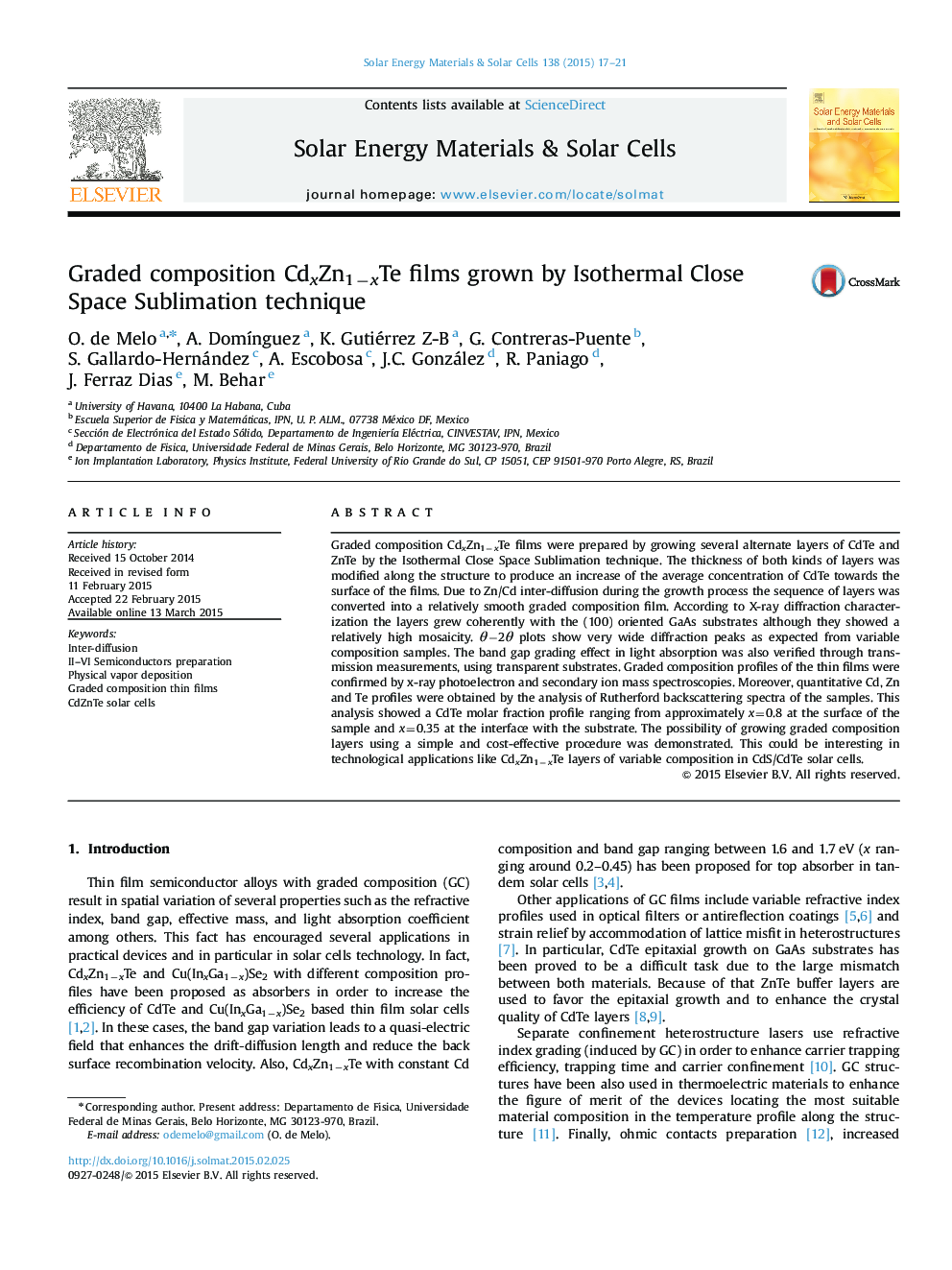| Article ID | Journal | Published Year | Pages | File Type |
|---|---|---|---|---|
| 77776 | Solar Energy Materials and Solar Cells | 2015 | 5 Pages |
•CdxZn1−xTe graded composition alloys were grown by Isothermal Close Space Sublimation.•The films were obtained by sequential substrate exposure to Cd, Zn and Te sources.•Composition ranges from x=0.85 (surface) to x=0.4 (substrate interface) approximately.
Graded composition CdxZn1−xTe films were prepared by growing several alternate layers of CdTe and ZnTe by the Isothermal Close Space Sublimation technique. The thickness of both kinds of layers was modified along the structure to produce an increase of the average concentration of CdTe towards the surface of the films. Due to Zn/Cd inter-diffusion during the growth process the sequence of layers was converted into a relatively smooth graded composition film. According to X-ray diffraction characterization the layers grew coherently with the (100) oriented GaAs substrates although they showed a relatively high mosaicity. θ−2θ plots show very wide diffraction peaks as expected from variable composition samples. The band gap grading effect in light absorption was also verified through transmission measurements, using transparent substrates. Graded composition profiles of the thin films were confirmed by x-ray photoelectron and secondary ion mass spectroscopies. Moreover, quantitative Cd, Zn and Te profiles were obtained by the analysis of Rutherford backscattering spectra of the samples. This analysis showed a CdTe molar fraction profile ranging from approximately x=0.8 at the surface of the sample and x=0.35 at the interface with the substrate. The possibility of growing graded composition layers using a simple and cost-effective procedure was demonstrated. This could be interesting in technological applications like CdxZn1−xTe layers of variable composition in CdS/CdTe solar cells.
Graphical abstractFigure optionsDownload full-size imageDownload as PowerPoint slide
